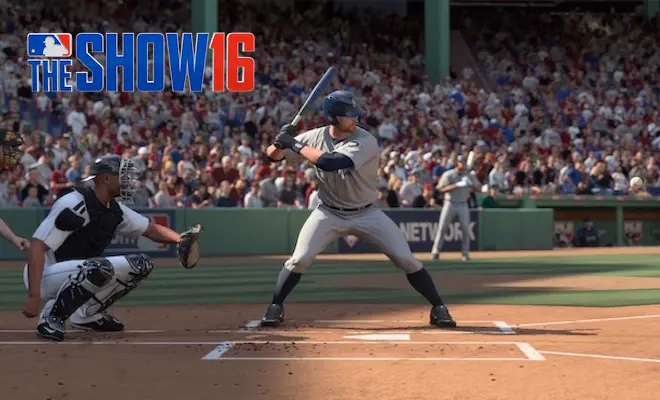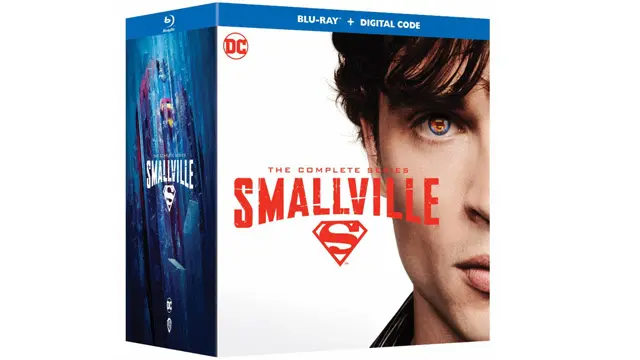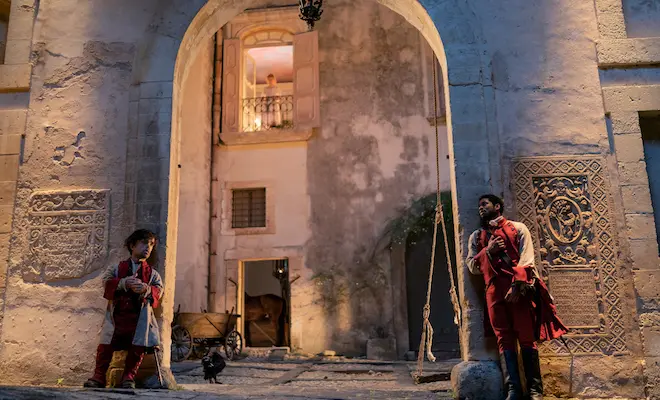I love baseball. Every year when developer Sony San Diego Studio releases a new version of their perennial home run, MLB: The Show — to me — is just like Opening Day. The excitement and the anticipation becomes almost unbearable. We can spend all winter reporting all about the new additions coming to the game each year, and post videos and screenshots until our eyes bleed and our fingers cramp, but until the new game loads up; and the near-perfect presentation kicks off; and the first batter steps into the box, no one really knows what changes will work and what will fall to the wayside as good intentions gone unfulfilled (looking at you, pulse pitching).
In MLB: The Show 16, San Diego Studio has doubled-down on presentation and game mode polish, leaving most major innovations on the bench, and the end result is a game franchise that not only changed the genre of sports video games over 10 years ago, but one that continues to lead off by showing other developers how to successfully pull off a full-featured sports title that resonates with the fan in all of us.
Baseball, when distilled down to its core, is a very simple game. It’s nine guys with a ball and a stick, versus nine guys with oversized leather gloves. One guy throws a balls over a rubber plate that’s about a foot across and has a mythical, invisible zone that floats three-feet above that plate. Another guy tries his hardest to use a stick to hit that ball as hard and as far as he can. It’s not rocket surgery. There are no scripted plays; no diagrams for Xs and Os. It’s a pitch and swing and possibly a hit, rinse and repeat for 27 outs on each side. Nothing will ever change there, and luckily, it’s the one thing that The Show does better than anyone else.
Pitching and hitting remain relatively unchanged, with very slight tweaks to the various meters and the info presented to the player as they play. Most of the features from last year’s title remain, adding even more realism to a game that at first glance looks and plays so incredibly lifelike. New player animations and graphical tweaks make the game characters look so much like their real-life counterparts that it’s impossible to differentiate between the two at a glance. Baseball has never looked better than it does here, and I still think that there’s room for improvement, which is a scary thought.
Confidence is a big deal in baseball, and MLB: The Show 16 does an amazing job adding it to this year’s campaign. Pitchers gain and lose confidence in pitches that they throw, and it affects how the pitch works. On the flip side, batters can see what is working that day for each pitcher and might be able to better jump on a 4-seam fastball that in previous games would have blown past them. The cat-and-mouse game played between batter and pitcher has never felt more real. Seriously, folks. This stuff is in this game, and that is why MLB: The Show is annually one of the best video games, sports or otherwise, period.

ShowTime slows the game down in pivotal moments to ensure the success of legend-making catches and epic, timely hits.
The Road to the Show (RTTS) mode, which is still the absolute best sports career sim on the market introduces the biggest new gameplay feature of the year, called ShowTime. This allows the player to hit the R2 button during the game in certain situations to cause the game to slow down and set up what could be an incredible play — both offensively and defensively. If the bases are loaded and you are down 4-2 in the bottom of the ninth, hit that R2 button to slow the pitch down as it crosses the plate and then send it onto the bookshelf of some lucky kid sitting in the outfield bleachers. The meter has essentially a one-time use, so the player has to ration it for when it is the most effective. ShowTime works on the defense as well. A second baseman can use ShowTime to ensure that he can reach a screamer over the pitchers head, or an outfielder can make the dive to rob extra bases. Missing, of course, not only stings because you wasted the ShowTime meter, but the damage done could be the difference from a win or a loss.

Creating a player from scratch and then taking them through a MLB career in Road to the Show is still fun and exciting.
The addition of ShowTime adds a new wrinkle to gameplay, and there have been games where I used it up, and there have been games where I never needed it. It’s not mandatory to use, but it’s there when — and if — needed. Heck, maybe you just want to pad your highlight reel with moon shot grand slams and diving put-outs at the hot corner. ShowTime gives The Show 16 a new and fun mechanic to add to a game, without, you know, changing or breaking the game.
In addition to ShowTime and streamlined, faster gameplay in RTTS, perks are introduced for the first time ever. Much like a popular FPS shooter, perks gives the player boosts that can be added each game that costs ShowTime meter points to use, but a guaranteed hit is nice to have in your pocket in a tight game. There is a limit of 120 perk points that can be used, and each perk has its own cost to equip. I used them once for the purpose of the review, and then dismantled it and won’t use it again. With perks and ShowTime, RTTS feels almost too easy, and the beauty of MLB: The Show has always been in the difficulty of the game. Baseball, while a simple sport, is not easy to play. And the rewards of moving up from AA Jackson to AAA Tacoma and eventually to Seattle have always felt earned after a long struggle of slumps and benchings, but here, my character’s progression feels like Mike Trout on steroids, and some of the realism in the gameplay has suffered. I mean, I’m glad I hit well over .400 in one season, but come on.
Another major renovation comes in the form of presentation. MLB: The Show 16 takes the broadcast stylings and hits it completely out of the park. Thousands of new lines of dialogue were recorded to truly tell the story of the battle on field, using situational phrases that are actually pertinent to the action going on in the game. Cut-aways between and after innings have the look and feel of watching a game on TV, including using real life video footage from locations in the host city, from skylines to tourist spots. Seattle features video footage of the Pike Place Market. It’s the same kind of things that networks have used for years in real broadcasts. Even something as small as the score “bug” (the little box that has the score, and balls, strikes, and outs) is tailored to different teams, almost as if you are watching completely unique broadcasts. It works amazingly well to further blur the line between real and game.
And even the umpire crews have been revamped this year. The umps have names, and backstories that the broadcast team of Matt Vasgersian, Eric Karros, and Steve Lyons will gladly tell you all about during a game. There are 20 unique umpires in The Show 16. Also, the umps seem to be mic’d, as strikes, balls, and base decisions ring out with clarity. It’s a small feature, but again proves that MLB: The Show 16 is trying so hard to create something realistic.

The statues in Detroit’s Comerica Park are just one of the many touches that add realism to The Show 16.
Certain parks with retractable roofs now have the ability to open and close, which changes the dynamic of the visuals in those parks, depending of the time of day and weather. Light and shadows — no matter the time of day — follow actual physics (and look stunning on the PS4). And parks — and teams — that have stadium-specific rituals or promotions are included. When Felix Hernandez takes the mound in Seattle (yes, all of my examples are from Seattle — can you guess my favorite team?), the gold-clad King’s Court is in session, with fans wearing yellow T-shirts and the “K-K-K-K” chants ring out when The King has two strikes on a batter. Again, this doesn’t affect gameplay but it adds so much realism to a video game that these changes, whether small or large, work to elevate MLB: The Show 16 so much higher than ANY sports video game on the market.
Speeding up the game is a feature that San Diego Studio has been working on for the last few years, starting with at-bats that begin deep into pitch counts. Now, MLB: The Show 16 goes even further by speeding up the already relatively quick RTTS games by eliminating the need to go back to the main menu after games (along with load times before and after). Now, players can play a whole series — two, three, or four games — as one event, and it makes churning through the summer months that much faster. I loaded a year-to-year save file (year-to-year saves in RTTS, Franchise and Season were introduced last year, and obviously return for The Show 16) from 2014’s game and quickly played through the back end of the ’14 season and all of 2015 (including spring training) in about three days. It used to take me about a month of real time to play a full season. That’s fast!

The WAR stat is one of the most important sabermetric used in baseball, and The Show 16 has finally included it.
On top of the broadcast presentations and ShowTime, two other modes have been revamped in MLB: The Show 16. Franchise mode has once again been changed to reflect a more realistic approach. Owners now have to rely on stats more than ever, and even revenue sharing and luxury tax penalties come into play. And finally Wins Above Replacement (WAR) are a viable stat in Franchise mode. This is huge for owners looking to build dynasties. Unfortunately, I’m still personally sad that I can no longer set merch, parking, and hot dog prices, or negotiate billboard advertising rates, which was my favorite thing about franchise mode in the past (this feature was taken out in 2013 — and yes, I’m still bitter). I’m glad that San Diego Studio is still tinkering with Franchise to give owners old and new more and more tools with which to build winners.
The Diamond Dynasty (DD) mode perhaps gets the biggest overhaul in MLB: The Show 16. The whole mode is still a card-based fantasy baseball game, but new features, like an incredible in-depth team creation suite, and two sub-modes in Battle Royale and Conquest make DD the mode worth checking out. New legends cards have been included here in The Show 16, and the community marketplace and the ability to buy packs with stubs or real cash make team building a breeze.
Battle Royale consists of a 25-man draft, and then a tournament of three-inning games to win prizes and bragging rights. We’ve seen this mode in Madden NFL 2016, but MLB: The Show 16 does an outstanding job bringing it to the world of baseball. If you keep winning, you go farther and farther, but two losses knocks you out and you have to start all over with another 25-man draft.
Conquest is a real-time-strategy-like mode where players play games against territories in hopes of building a nationwide fanbase. Winning games creates fans, and then those fans can be dispersed around North America to foment bigger fanbases. The goal is to make the entire continent into Mariners fans. Well, that’s my goal, at least. The rewards are rare cards that can be used in other The Show 16 modes. It’s a neat mode, and I do enjoy playing it, but it’s not what I’m here to do.
Also to be noted, the Home Run Derby mode has adopted the new rules from the actual All Star Weekend, with team captains taking precedence over league loyalty. Challenge of the Week also returns, this year with both hard goods and digital goods as prizes, which will hopefully give more players a chance to win each week. Lastly, Sounds of the Show returns giving players the option of adding their own music files for batter walk ups, home runs, and crowd chants can be recorded and assigned to individual players. In addition, it begs to be mentioned that the in-game soundtrack continues to be one of the best in a sports game franchise. I don’t know how they do it year-in and year-out, but Sony San Diego curates an incredible music set each year, and this year is no different.

If the interviewer asked the real me what I thought about the game, I’d have very positive things to say.
MLB: The Show 16 is simply without peer as not only a baseball video game, but as a sports video game. NBA2K has done some great stuff lately in their series, and Madden is catching up, but MLB: The Show continues to set the pace on how to create a near-perfect sports franchise. With already solid gameplay, deep customization in how the game is played, including myriad sliders for nearly every aspect of the sport, and now some major love and innovation given to presentation and ancillary features, Sony’s San Diego Studio sits atop the throne as the best sports developer on this planet, and MLB: The Show 16 is proof positive why they belong there. The start of a new MLB baseball season in now only days away, but I don’t mind. In my season, I’m already in June and I have a few players who will be playing in San Diego on the second Tuesday in July. When a video game can replace some of the grandeur of the real thing, there is no truer measuring stick for its greatness.
MLB: The Show 16 is available now exclusively for the Playstation 3 and Playstation 4. This review is based off a PS4 review code provided by Sony.






